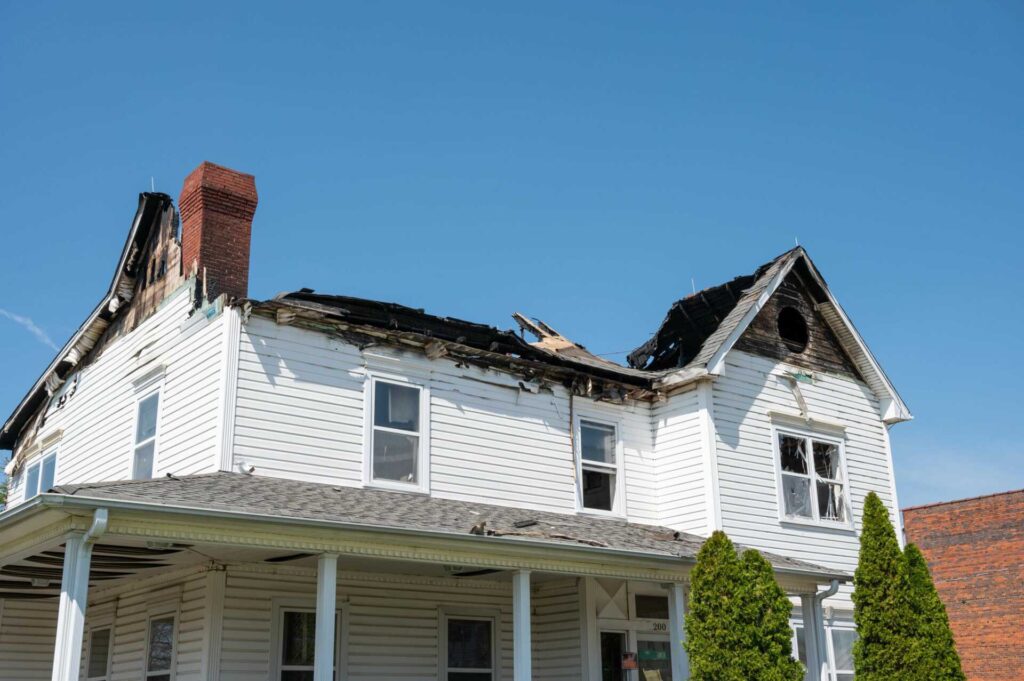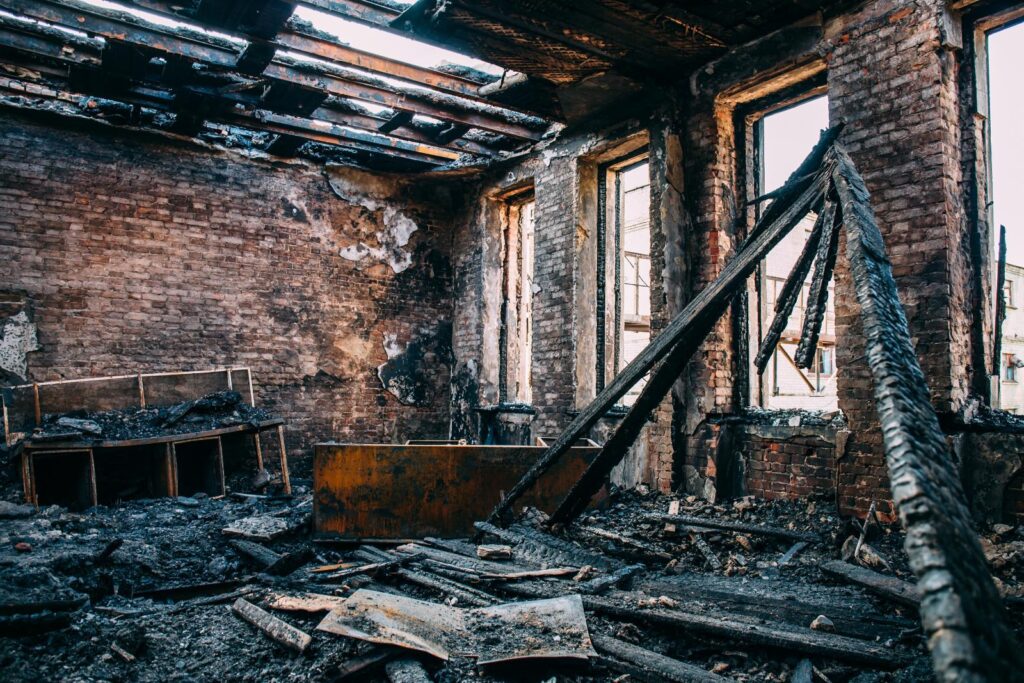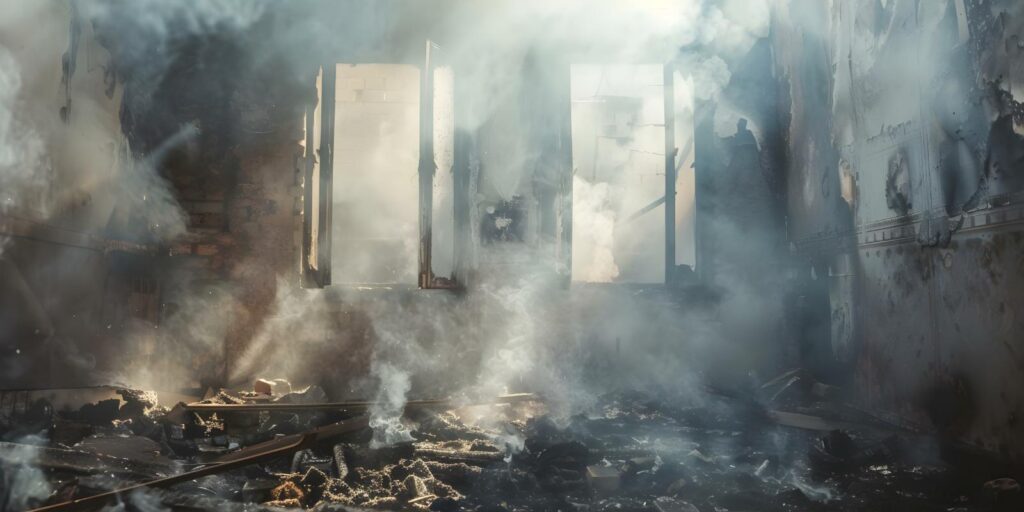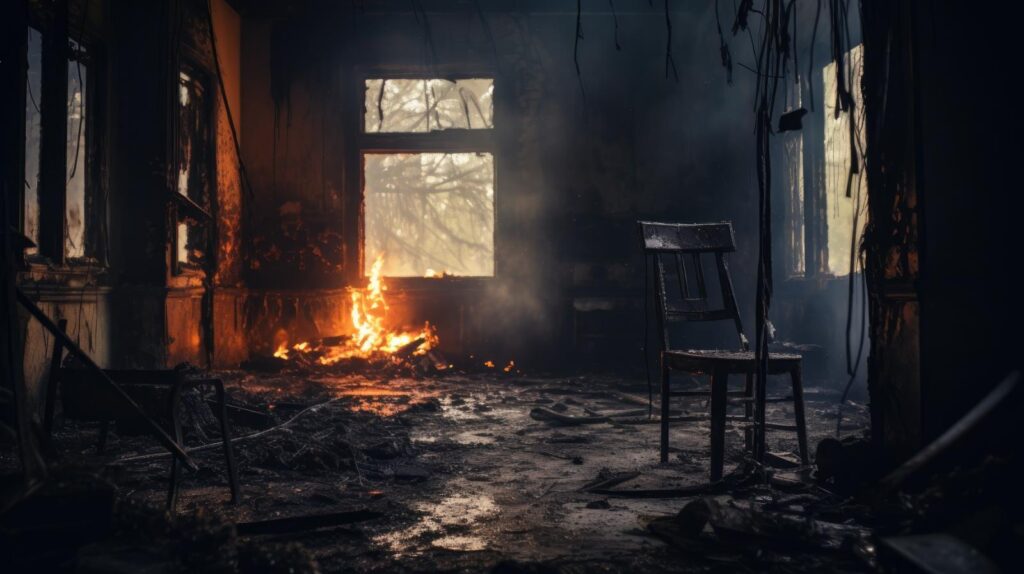
Contents
When faced with fire damage, you’ve got to act quickly and decisively. The process involves three essential steps that can significantly impact your recovery. First, you need to assess the damage thoroughly to understand what you’re up against. But that’s just the beginning; there’s much more involved in restoring your property to its pre-fire condition. What comes next might surprise you and could make all the difference in your restoration efforts.
Key Takeaways
- Prioritize safety by wearing appropriate PPE and assessing structural integrity before entering the property after a fire incident.
- Conduct a thorough damage assessment, documenting findings with photographs and notes for both fire and water damage.
- Begin cleaning by removing smoke residue, sanitizing surfaces, and addressing lingering odors with effective cleaning agents and equipment.
- Implement necessary repairs using fire-resistant materials and hire professionals for complicated electrical or plumbing work.
- Establish future prevention measures, including installing smoke detectors, educating occupants on fire safety, and creating an emergency evacuation plan.
Assessing the Damage
When assessing the damage after a fire, you’ll need to approach the situation with a structured plan. First, ensure your safety and the safety of others by donning appropriate personal protective equipment (PPE) such as masks, gloves, and protective clothing.
Before entering the property, check for structural integrity and potential hazards like falling debris or lingering smoke.
Next, conduct a thorough damage evaluation. Start with a visual inspection of the exterior, noting any signs of charred materials or significant structural damage.
Move inside, assessing each room systematically. Pay close attention to walls, ceilings, and floors, as these areas often reveal the extent of fire and smoke damage. Document your findings with photographs and detailed notes, as this will aid in any insurance claims and future restoration efforts.
Don’t overlook the importance of inspecting electrical systems and appliances. Fire can compromise wiring, creating a significant risk for further hazards if not addressed.
Similarly, check for water damage from firefighting efforts, which can lead to mold growth if not managed promptly.
Throughout this process, maintain a focus on safety precautions. If you encounter unstable structures or hazardous materials, it’s crucial to call in professionals who specialize in fire damage assessment and restoration.
Cleaning and Sanitizing
After assessing the damage, it’s time to move on to cleaning and sanitizing the affected areas.
Begin by gathering the necessary supplies: heavy-duty trash bags, a vacuum with a HEPA filter, brushes, and specialized cleaning agents designed for fire damage. It’s crucial to wear protective gear, including gloves and masks, to ensure your safety during this process.
Start with smoke removal. Use a vacuum to eliminate soot and ash from surfaces, focusing on walls, ceilings, and floors.
Pay special attention to porous materials, as they can trap smoke particles. For stubborn stains, a mixture of water and a suitable cleaning agent can help lift the residue. Scrubbing gently will yield better results without damaging the surfaces.
Next, tackle odor elimination. Smoke can leave behind persistent smells, so you’ll want to ensure that you neutralize these odors effectively.
Use an ozone generator or air scrubber, which can help purify the air and eliminate lingering scents. Additionally, consider using odor-neutralizing sprays on fabrics and upholstery, as they often absorb smoke.
Don’t forget to sanitize surfaces thoroughly. Utilize disinfectants to wipe down all areas, ensuring that you kill any bacteria that may have developed as a result of the fire.
Pay special attention to kitchen surfaces and bathrooms.
Finally, allow everything to dry completely. Proper drying prevents mold growth and prepares the area for the next steps in the restoration process.
Repair and Restoration
Once the cleaning and sanitizing are complete, you can focus on the repair and restoration of your property. This phase is crucial for returning your home to its pre-fire condition and involves a series of methodical steps.
Start by assessing the extent of the damage. Identify structural issues, such as compromised walls, ceilings, and floors. You’ll want to document everything, as this can be vital for insurance claims.
Next, employ effective repair techniques. For instance, reinforcing structural elements may involve installing new beams or supports. If you have damaged drywall or plaster, patching or replacing it’s essential. Make sure to use fire-resistant materials wherever possible to enhance safety.
The restoration process also includes addressing electrical and plumbing systems. Hire licensed professionals to inspect and repair any damaged wiring or pipes, ensuring everything meets current safety codes.
Once the structural and systems repairs are complete, you can move on to cosmetic work, like painting or refinishing surfaces. Choose colors and finishes that evoke a sense of comfort and belonging, as this can help restore a feeling of home.
Finally, consider installing smoke detectors and fire extinguishers as a proactive measure against future incidents. This will enhance safety and provide peace of mind.
Recap
Effectively restoring fire damage requires you to assess the damage meticulously, clean and sanitize it thoroughly, and repair it with precision. While you might think tackling this process alone is feasible, the risks of overlooking hidden damage or inadequate cleaning can lead to costly long-term issues, such as mold or structural instability. By engaging licensed professionals, you ensure every aspect is handled meticulously, safeguarding your home and peace of mind for the future.



